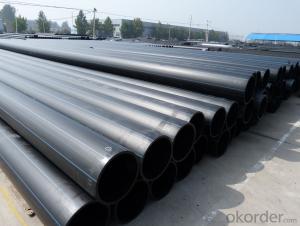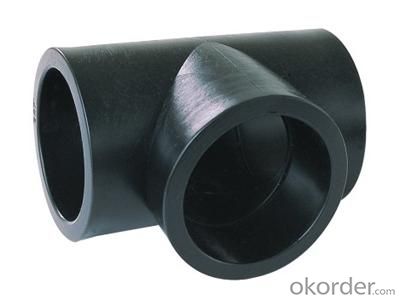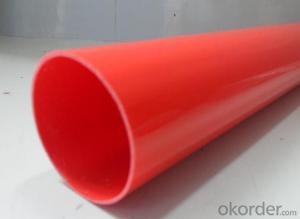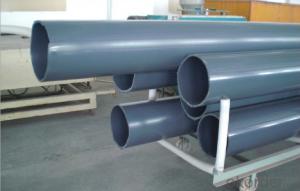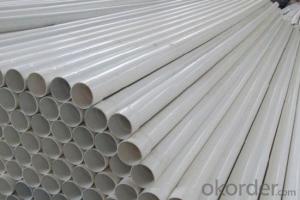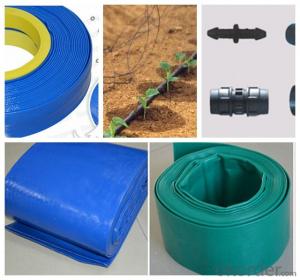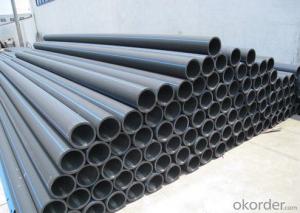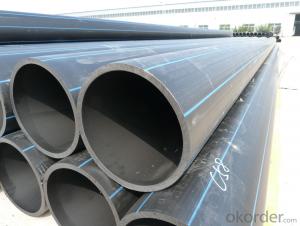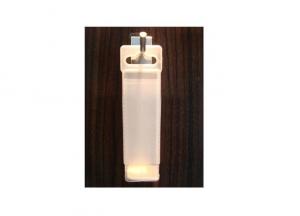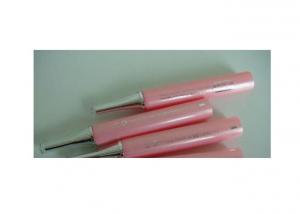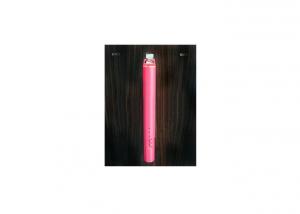Plastic Tubes DN315mm HDPE Pipes for Water Supply On Sale
- Loading Port:
- Qingdao
- Payment Terms:
- TT OR LC
- Min Order Qty:
- 100 m.t.
- Supply Capability:
- 2000 m.t./month
OKorder Service Pledge
OKorder Financial Service
You Might Also Like
1.Specifications
1. Length: 6m, 12m or In compliance to your requests
2. Pipes are available in the form of coils or straight lengths
3. A comprehensive range of pipe fittings are always held in stock.
2.Packaging & Delivery
Packaging Detail: | standard packing for export or as requested |
Delivery Detail: | 1~5weeks |
3.Features:
· Facilitating high resistance to loadings, pressure and vacuum with high tensile strength,
· Enabling high resistance to corrosion,
· Not requiring cathodic protection,
· Less operating cost since cast pipes have larger nominal diameter than polyethylene pipes.
· Being the best pipe in case of an earthquake, with its ability of resilience and resistance to impacts without deformation,
· Long product life, exceeding 50 years,
· Preserving the quality of water with healthy interior coating.
4.size range
Weight(kg/m) | Weight(kg/m) | Weight(kg/m) | Weight(kg/m) | |||
Wall thickness(mm) | Wall thickness(mm) | PE80 | PE80 | PE100 | PE100 | |
Nominal Outside Diameter(mm) | SDR17.6 | SDR11 | SDR17.6 | SDR11 | SDR17.6 | SDR11 |
20 | 2.3 | 3.0 | 0.132 | 0.163 | 0.133 | 0.164 |
25 | 2.3 | 3.0 | 0.170 | 0.211 | 0.171 | 0.212 |
32 | 2.3 | 3.0 | 0.222 | 0.278 | 0.224 | 0.279 |
40 | 2.3 | 3.7 | 0.283 | 0.430 | 0.284 | 0.432 |
50 | 2.9 | 4.6 | 0.438 | 0.666 | 0.440 | 0.670 |
63 | 3.6 | 5.8 | 0.686 | 1.053 | 0.689 | 1.058 |
75 | 4.3 | 6.8 | 0.975 | 1.470 | 0.980 | 1.478 |
90 | 5.2 | 8.2 | 1.411 | 2.130 | 1.419 | 2.141 |
110 | 6.3 | 10.0 | 2.084 | 3.159 | 2.095 | 3.176 |
125 | 7.1 | 11.4 | 2.670 | 4.098 | 2.684 | 4.120 |
140 | 8.0 | 12.7 | 3.347 | 5.108 | 3.364 | 5.135 |
160 | 9.1 | 14.6 | 4.368 | 6.705 | 4.391 | 6.740 |
180 | 10.3 | 16.4 | 5.549 | 8.474 | 5.578 | 8.519 |
200 | 11.4 | 18.2 | 6.817 | 10.451 | 6.853 | 10.505 |
225 | 12.8 | 20.5 | 8.596 | 13.228 | 8.641 | 13.298 |
250 | 14.2 | 22.7 | 10.611 | 16.268 | 10.666 | 16.354 |
280 | 15.9 | 25.4 | 13.274 | 20.396 | 13.343 | 20.502 |
315 | 17.9 | 28.6 | 16.804 | 25.818 | 16.892 | 25.953 |
355 | 20.2 | 32.3 | 21.398 | 32.861 | 21.510 | 33.033 |
400 | 22.8 | 36.4 | 27.164 | 41.706 | 27.306 | 41.924 |
450 | 25.6 | 40.9 | 34.320 | 52.688 | 34.499 | 52.964 |
500 | 28.4 | 45.5 | 42.311 | 65.135 | 42.533 | 65.476 |
560 | 31.9 | 50.9 | 53.169 | 81.583 | 53.447 | 82.010 |
630 | 35.8 | 57.3 | 67.134 | 103.347 | 67.486 | 103.888 |
5.size range (water pipe)
Pipe series | Pipe series | Pipe series | Pipe series | Pipe series | Pipe series | |
SDR11 | SDR13.6 | SDR17 | SDR21 | SDR26 | SDR33 | |
Nominal pressure(bar) | Nominal pressure(bar) | Nominal pressure(bar) | Nominal pressure(bar) | Nominal pressure(bar) | Nominal pressure(bar) | |
PE80 | PN12.5 | PN10 | PN8 | PN6 | PN4 | |
PE100 | PN16 | PN12.5 | PN10 | PN8 | PN6 | |
Nominal Outside Diameter(mm) | Wall thickness(mm) | Wall thickness(mm) | Wall thickness(mm) | Wall thickness(mm) | Wall thickness(mm) | Wall thickness(mm) |
20 | 2.3 | |||||
25 | 2.3 | |||||
32 | 3.0 | |||||
40 | 3.7 | |||||
50 | 4.6 | |||||
63 | 5.8 | 4.7 | ||||
75 | 6.8 | 5.6 | 4.5 | |||
90 | 8.2 | 6.7 | 5.4 | 4.3 | ||
110 | 10.0 | 8.1 | 6.6 | 5.3 | 4.2 | |
125 | 11.4 | 9.2 | 7.4 | 6.0 | 4.8 | |
140 | 12.7 | 10.3 | 8.3 | 6.7 | 5.4 | 4.3 |
160 | 14.6 | 11.8 | 9.5 | 7.7 | 6.2 | 4.9 |
180 | 16.4 | 13.3 | 10.7 | 8.6 | 6.9 | 5.5 |
200 | 18.2 | 14.7 | 11.9 | 9.6 | 7.7 | 6.2 |
225 | 20.5 | 16.6 | 13.4 | 10.8 | 8.6 | 6.9 |
250 | 22.7 | 18.4 | 14.8 | 11.9 | 9.6 | 7.7 |
280 | 25.4 | 20.6 | 16.6 | 13.4 | 10.7 | 8.6 |
315 | 28.6 | 23.2 | 18.7 | 15.0 | 12.1 | 9.7 |
355 | 32.2 | 26.1 | 21.1 | 16.9 | 13.6 | 10.9 |
400 | 36.3 | 29.4 | 23.7 | 19.1 | 15.3 | 12.3 |
450 | 40.9 | 33.1 | 26.7 | 21.5 | 17.2 | 13.8 |
500 | 45.4 | 36.8 | 29.7 | 23.9 | 19.1 | 15.3 |
560 | 50.8 | 41.2 | 33.2 | 26.7 | 21.4 | 17.2 |
630 | 57.2 | 46.3 | 37.4 | 30.0 | 24.1 | 19.3 |
710 | 52.2 | 42.1 | 33.9 | 27.2 | 21.8 | |
800 | 58.8 | 47.4 | 38.1 | 30.6 | 24.5 |
6.FAQ
Q:What the Raw material?
A:We use 100%Korea material.
Q:What is you MOQ?
A:As customer’s request.
Q:What is the production ability? or delivery time?
A:Our production ability support 40HQ order finish in one week.
Q:What is the regular shipping port?
A:Tianjin or Shanghai.
Q:What is your payment?
A:TT or CC.
Q:Can we have sample?
A:Sample free, freight cost you.
Q:For urgently doubts,who online?
A:Sales and marketing Manager 24hours online service.
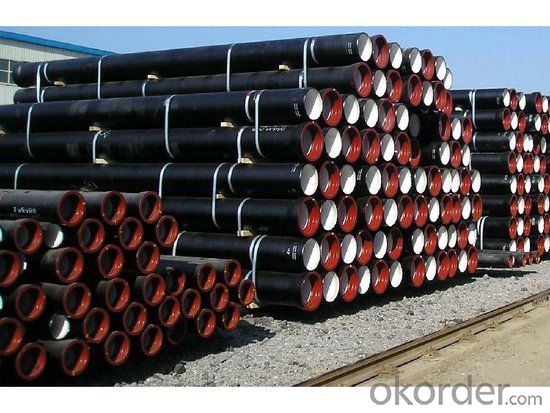
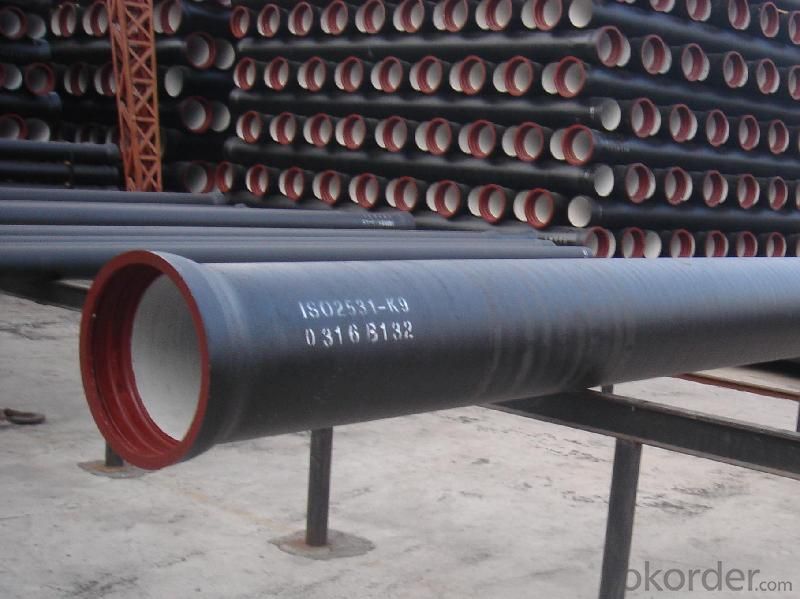
- Q: I keep my hamster in a Rotastak cage, which is connected with plastic tubes. The thing about this is my hamster likes to use them as a toilet, making me have to clean her cage more often and it's just disgusting! How can I stop her doing this??
- My science teacher taught this to me. She uses a little container (a flat dish of some sort); I used one of those hummus containers. Fill it with kitty litter (any kind), and she will go there to pee all the time. Don't know how, but it worked with my hamster. Try it! Those hamster litter and potty things never work from the store.
- Q: How are plastic tubes sterilized?
- Plastic tubes can be sterilized through various methods such as autoclaving, ethylene oxide gas sterilization, gamma irradiation, or by using chemical sterilants. Each method has its own advantages and is chosen based on the specific requirements of the application and the type of plastic used in the tubes. Autoclaving involves subjecting the tubes to high-pressure steam, which effectively kills microorganisms. Ethylene oxide gas sterilization uses a gas that penetrates the plastic and destroys the microbes. Gamma irradiation exposes the tubes to high-energy gamma rays that disrupt the DNA of microorganisms. Chemical sterilants can also be used to disinfect the tubes by immersing or spraying them with appropriate sterilizing agents. The choice of sterilization method depends on factors such as the sensitivity of the plastic material to heat or radiation, the required sterility level, and the potential impact on the tube's functionality.
- Q: Can plastic tubes be used for aquariums or fish tanks?
- Yes, plastic tubes can be used for aquariums or fish tanks. They can be employed for various purposes such as creating water flow, connecting filters or air pumps, or even as decorations. However, it is important to ensure that the plastic used is non-toxic and safe for aquatic life, as certain plastics may release harmful substances into the water.
- Q: Has anyone tried to get inside those plastic balloons that come in the tubes?
- surrrrre wtf are you talking about?
- Q: This is for an engineering class. The tower cannot have any supports and must extend horizontally over 7 feet without touching the floor. It can bend. It is also going to be extended from a 1.5 inch plastic tube. Please answer ASAP! Need answer before 11/28/07. Thanks
- You need to provide a sketch of some kind. Cannot visualize your problem.
- Q: Plastic pipe extrusion swelling
- Such as plastic pipes, profiles, plates, sheets, blown film, packaging tape, woven bags and so on, all belong to the extrusion range
- Q: Can plastic tubes be used for irrigation lines?
- Yes, plastic tubes can be used for irrigation lines. They are commonly used in agriculture and gardening as they are durable, flexible, and resistant to corrosion. Plastic tubes are also cost-effective and easy to install, making them a popular choice for irrigation systems.
- Q: How do plastic tubes compare to stainless steel tubes in terms of corrosion resistance?
- Plastic tubes generally offer better corrosion resistance compared to stainless steel tubes. While stainless steel is known for its resistance to corrosion, it can still be susceptible to pitting and crevice corrosion in certain environments. Plastic tubes, on the other hand, are non-metallic and are immune to rust and corrosion caused by moisture, chemicals, or other corrosive substances. This makes plastic tubes a preferred choice in applications where corrosion resistance is of utmost importance.
- Q: Should I use them or take them off. They are currently on my strings, but my two lower strings sound really bad.
- The purpose of these plastic tubes is to prevent your bridge from being damaged. As we violinist know,the violin needs constant tuning and if you are using gut strings,would react weirdly to the physical environment should it change. The plastic tubes are to prevent your bridge from being cut by the strings especially by the E string which is very thin.Normally I take off the plastic tubes on the lower 2 strings but I think its okay if you don't too. I don't think it will affect the sound though.Maybe your strings are new so they haven't really settled down yet.Different strings when placed newly create all sorts of odd sounds.I particularly hate the Dominant ones as they have that metallic edge in the sound when its just placed.
- Q: It needs to be a bit smaller than a pringle tube, min 2mm thickness bout 30cm length maybe 5cm diameter. I need to be able to seal both ends and its got to be sturdy not squashy and preferably shatter proof.Ive seen mailing tubes and poster tubes even baseball bat tubes but there all either too big or come in packs I only need 3...can anyone help? P.s im in the U.K
- In the U.S. we have a chain of stores called Tap Plastics who sell many types and shapes of, well, plastic. Try a home improvement center. They may not have it there, but would know where to find it.
Send your message to us
Plastic Tubes DN315mm HDPE Pipes for Water Supply On Sale
- Loading Port:
- Qingdao
- Payment Terms:
- TT OR LC
- Min Order Qty:
- 100 m.t.
- Supply Capability:
- 2000 m.t./month
OKorder Service Pledge
OKorder Financial Service
Similar products
Hot products
Hot Searches
Related keywords
